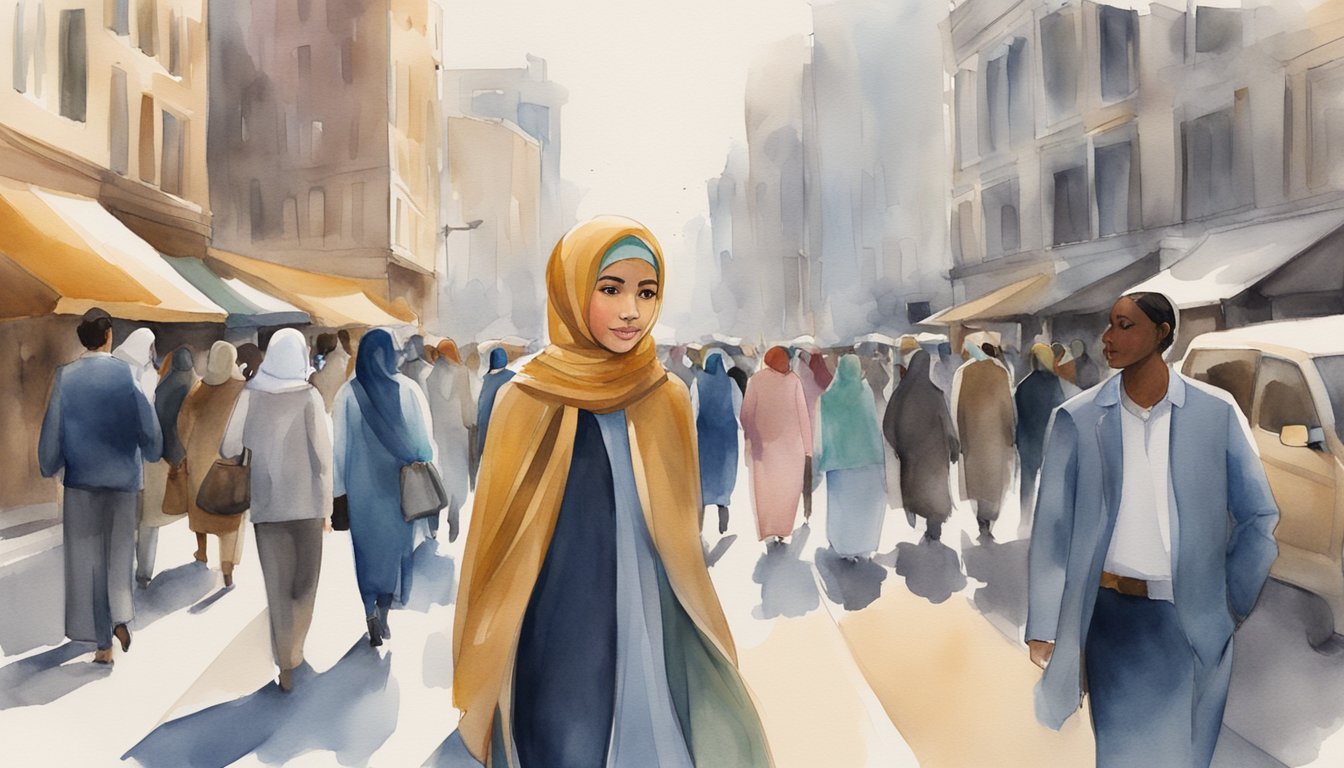Understanding the Hijab
The hijab is more than just a piece of cloth; it is steeped in significance and varies in meaning from one individual to another, often reflecting a blend of religious, cultural, and personal dimensions.
Religious Significance
In Islam, the hijab serves as a symbol of faith and a form of religious obligation. Many Muslim women wear the hijab as an act of modesty and devotion to God. Islamic scholars emphasize that the hijab is mentioned in the Quran, where women are advised to draw their cloaks close around them as an expression of modest behavior. This prescription has been interpreted to include covering the hair and, by extension, adopting the hijab. The wearing of the hijab is thus viewed by many as a direct response to Islamic law and religious beliefs.
Cultural Interpretations
Although the hijab is rooted in Islam, its cultural interpretations can vary widely. In some societies, it has become integrated into national and ethnic customs, transcending purely religious dimensions. For many, the hijab symbolizes cultural heritage and tradition and comprises an integral element of social identity. The practice might retain its original religious connotations or evolve to meet the cultural context, reflecting nuances that can be strikingly different from its initial religious purposes.
Personal Identity and Choice
Personal identity and empowerment are increasingly celebrated aspects of wearing the hijab. For numerous women, the hijab signifies personal choice, control over self-presentation, and a statement of individuality. It’s a conscious decision by many women to embrace their identity, challenge stereotypes, and assert their presence in society. The hijab can also be a canvas for self-expression, with styles and colors that reflect individual tastes and personalities. Discussions about the hijab are incomplete without acknowledging its role in the realm of personal autonomy and expression.
Hijab in Society

The hijab is more than a piece of clothing; it’s woven deeply into the social and legal fabric of many societies, reflecting diversity in attitudes and experiences globally.
Global Perspectives
In countries like Indonesia, the hijab is a common sight, often seen as a symbol of piety and cultural identity. The expression of cultural and religious identities through the hijab can vary widely, echoing societal norms. For instance, in Saudi Arabia, it is a mandatory part of women’s attire in public spaces, while in the Mediterranean, the practice may be more relaxed, reflecting a mixture of local customs and modern influences.
Legal and Social Challenges
The hijab has been at the heart of legal challenges across the globe. In France, the ban on the hijab in certain public spaces has sparked debates about secularism and individual rights. Meanwhile, manifestations of Islamophobia can include discrimination against women who wear the hijab, restricting their access to education and employment opportunities. This discrimination can challenge the integration and sense of belonging of Muslim women in Western societies.
Community and Integration
Integration and community experiences for hijab-wearing women are diverse. World Hijab Day, for example, aims to foster awareness and solidarity with Muslim women who face stereotypes and racism. At the same time, mosques play a pivotal role in community cohesion, often serving as bridges between Muslim women and the broader society. However, despite efforts to raise awareness, pervasive stereotypes still significantly impact the everyday lives of many women who choose to wear the hijab.
Expression and Style

When it comes to hijab, it’s not just about humility; it reflects a blend of individual identities and contemporary style choices that resonate with personal beliefs and cultural norms.
Fashion and Modernity
The hijab has evolved beyond a traditional head covering into a statement that intersects with modern fashion trends. Women worldwide are asserting their identities by incorporating elements of western fashion into their modest dressing, creating a unique style that adheres to the principles of modesty while embracing contemporary aesthetics. From vibrant colors and patterns to the integration of accessories, the modern hijab is a canvas for personal expression and stylistic innovation.
Variations of the Hijab
The hijab comes in many forms, each adapting to cultural and personal preferences. While some women choose the full coverage of a burqa or niqab, others opt for the less concealing dupatta or jilbab. The chador wraps around the body, providing ample coverage while allowing for movement and comfort. Necklines are adjusted, ears and hair usually remain covered, and fabrics vary to accommodate climate, occasion, and individual taste. Each variation of the hijab is a reflection of one’s identity and adds to the richness of cultural adornment. Whether through a bright scarf loosely tied to frame the face or a neatly draped chador, women are finding ways to showcase their identities and stay true to their values.

